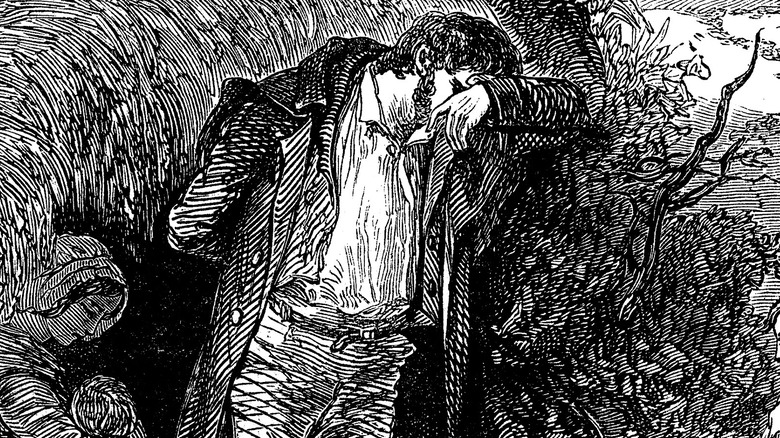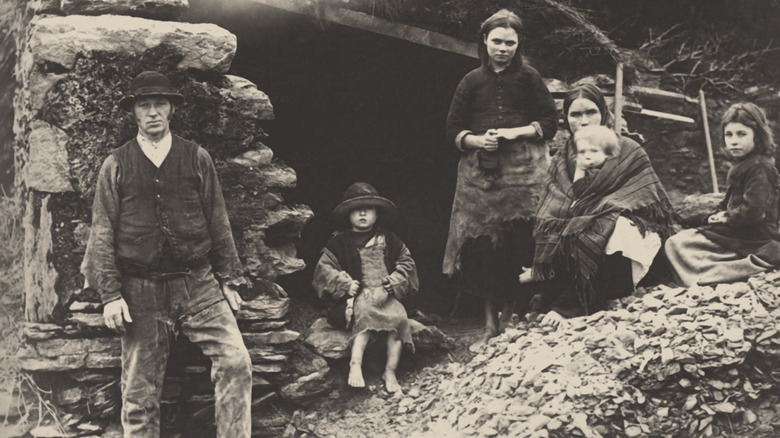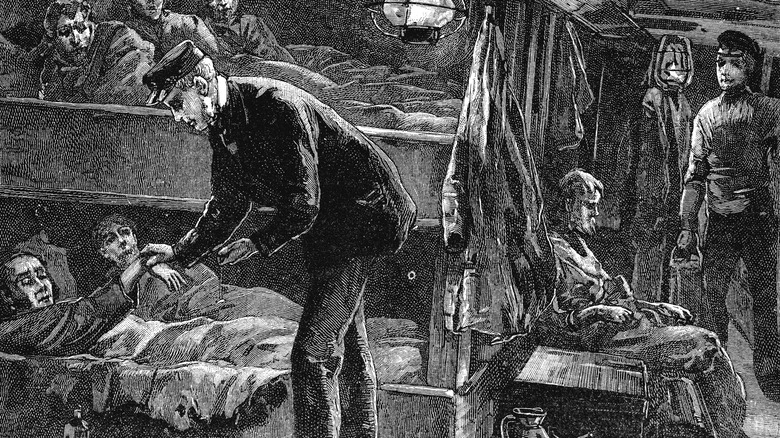How The Irish Potato Famine Led To An Alliance Between Ireland And The Choctaw Tribe Of The US
All too often, the potato just doesn't get the respect it deserves. This seemingly humble and rather bland-tasting crop can be enjoyed in a huge variety of delicious ways. Potato chips, fries, potato salad, baked potatoes ... if the word "potato" has already lost all meaning for you, it's because this wholesome foodstuff is just that versatile.
According to Healthline, potatoes are rich in vitamin C, provide fiber and protein, and are very low in fat. Naturally, nutritional benefits such as these can be swiftly wiped out by the addition of cheese, salsa, salt and all manner of other popular additions to a potato-centric meal or snack. Regardless, though, the plant is a huge part of the diets of people all around the world.
Sadly, though, this invaluable plant has proven to be vulnerable to blights. The tragic Irish potato famine is perhaps the most prominent example of this. If any positive came from the infamous disaster, it was the alliance that arose between two seemingly disparate peoples: the Choctaw Tribe and the Irish.
The Choctaws' generous donation
In the middle of the 19th century, History reports, the people of Ireland were very reliant on the wholesome potato for food. This tremendous dietary staple, sadly, was decimated by the Phytophthora infestans, a mold that soon spread. While it's common for certain crop yields to be reduced by such unfortunate outbreaks, this mold devastated crops on an unprecedented scale. In 1845, half of Ireland's potatoes were destroyed by it, and just a quarter of the annual supply was rendered edible into the next decade.
According to Britannica, half of the Irish people were almost entirely reliant on the potato. The blight destroyed the edible portion of the plants (and most of the rest of it besides), and damage on this scale could only result in calamity. About one million people died in Ireland as a result of the famine, and twice that number left the country. Many of these emigrants left for the United States, home of the Choctaw tribe that would nobly contribute to the relief efforts in Ireland.
CNN reports that U.S. newspaper coverage entreated the people for donations to help the Irish. The Choctaw, having been forced along the tragic Trail of Tears from Mississippi to Oklahoma, were intimately familiar with the suffering of their fellow humans. As Nation Chief Gary Batton explained to CNN, "we felt their pain." Though they had little to offer themselves, they reached out to help the famine-stricken Irish.
Almost two centuries of friendship later ...
The Irish Times reports that Major William Armstrong arranged an historic meeting on the subject in Oklahoma in March 1847. "While the crowd included many missionaries and traders, much of the $170 subscribed at day's end would come from the chiefs of the Choctaw Nation, who were also present," Turtle Bunberry writes.
The sum is a hugely significant one for its time ("worth tens of thousands of dollars in modern terms," according to the BBC), and marked the beginning of an alliance between the two peoples. In March 2018, the BBC reports, Irish Prime Minister Leo Varadkar visited the Oklahoma home of the tribe. He said that the Choctaw's kindness was a "sacred bond, which has joined our peoples together for all time."
This has certainly proven to be the case. In 2020, a GoFundMe campaign for the Navajo & Hopi Families COVID-19 Relief Fund, was set up when the Native American community was struck by the pandemic. The campaign, as of October 2022, had made $7.92 million, much of which was contributed by grateful Irish people. One donor, Sandra Nugent, wrote, "Seastán na hÉireann lenár gcairde" — Gaelic for "The Irish stand with their friends."


